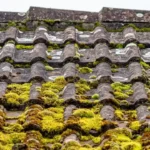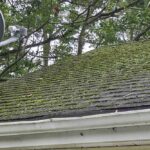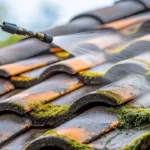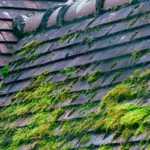As cities grow and green spaces shrink, the concept of green roofs offers a breath of fresh airliterally. By utilizing an effective green roof soil mix, urban dwellers can transform their rooftops into lush gardens. This not only enhances the aesthetic appeal but also contributes significantly to environmental sustainability. Lets delve into what makes a great green roof soil mix and why its crucial for your homes eco-friendliness.

What is a Green Roof?
A green roof is essentially a rooftop covered with vegetation and a growing medium, planted over a waterproofing membrane. They may include additional layers such as root barriers and drainage and irrigation systems. The key to a successful green roof lies in the choice of soil mix, which must support plant life while being lightweight enough to avoid putting undue stress on the building structure.
Importance of Green Roofs
Green roofs are vital for reducing the urban heat island effect, improving air quality, and providing insulation. According to the GSA, green roofs can reduce energy usage by providing natural insulation and also help manage stormwater effectively.
Environmental Benefits
Green roofs absorb rainwater, provide insulation, create a habitat for wildlife, and help to lower urban air temperatures. They can also reduce noise pollution and improve air quality, making cities healthier places to live.
Economic Benefits
Investing in a green roof can extend the lifespan of your roof by protecting it from the elements. This leads to lower maintenance costs and energy savings due to improved insulation. For more tips on roof drainage, check out our guide.
Key Components of a Green Roof Soil Mix
The soil mix is a crucial part of the green roof system. It must be lightweight, provide adequate drainage, and have the right balance of nutrients to support plant life. The basic components include:
Lightweight Aggregates
These are used to reduce the overall weight of the soil mix. Common aggregates include expanded clay, pumice, and lightweight expanded shale.
Organic Matter
Organic materials like compost provide nutrients necessary for plant growth. However, they should be used in moderation to avoid excessive weight and potential root rot.
Minerals
Minerals such as perlite or vermiculite are added to improve aeration and water retention. They help in keeping the soil structure stable and prevent compaction.
Choosing the Right Plants
Selecting the right plants is essential for the success of a green roof. They must be able to withstand harsh rooftop conditions such as high winds, direct sunlight, and limited water. Succulents, grasses, and sedums are popular choices due to their drought-resistant nature.
Installation and Maintenance
Proper installation is crucial for the longevity of a green roof. It involves laying down a waterproof membrane, installing a drainage system, and applying the soil mix. Regular maintenance, including watering, fertilizing, and weeding, is essential to keep the roof in top condition.
Drainage Systems
A good drainage system is essential to prevent waterlogging, which can damage plants and the roof structure. For more on ensuring your roof drainage complies with local codes, visit our article on roof codes.
Watering and Fertilization
While green roofs are designed to be low-maintenance, occasional watering and fertilization may be necessary, especially during dry spells. Use slow-release fertilizers to provide a steady nutrient supply.
Challenges and Solutions
While green roofs offer numerous benefits, they also come with challenges such as initial costs and structural requirements. However, these can be mitigated with proper planning and design. Engaging with professionals who specialize in green roof systems can ensure a successful installation.
Structural Considerations
Before installing a green roof, it’s important to assess the building’s structural capacity. Consulting with an engineer or architect can help determine if additional support is needed.
Cost Considerations
Although the initial cost of a green roof can be high, the long-term savings on energy and maintenance make it a worthwhile investment. For more on the benefits of green roof insulation, check out our detailed article.
Conclusion
Green roofs are a fantastic way to contribute to urban sustainability, offering both environmental and economic benefits. By selecting the right green roof soil mix and plants, homeowners can transform their rooftops into thriving ecosystems. For additional insights, explore the advantages and disadvantages of green roofs on Viritopia.

FAQs
What is the ideal depth for a green roof soil mix?
The ideal depth depends on the type of plants and roof structure. Generally, a depth of 4 to 6 inches is suitable for most plants.
How often should a green roof be watered?
Watering frequency depends on the climate and plant selection. During dry periods, watering once a week may be necessary.
Can any building support a green roof?
Not all buildings are suitable for green roofs. A structural assessment is necessary to determine if a building can support the additional weight.
This article contains affiliate links. We may earn a commission at no extra cost to you.








